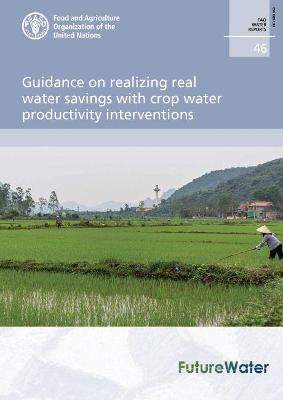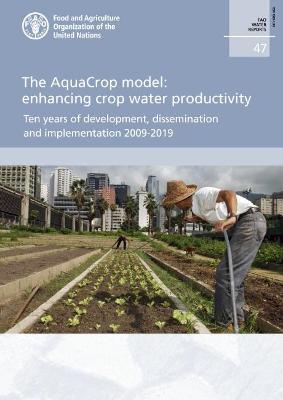FAO Water Reports
2 total works
Guidance on realizing real water savings with crop water productivity interventions
by J. Van Opstal, P. Droogers, A. Kaune, P. Steduto, and C. Perry
Published 30 June 2021
The new FAO Water Report "Guidance on realizing real water savings with crop water productivity interventions" includes clear and practical guidelines on how to implement 'real' water savings in agriculture through interventions for enhancing crop water productivity.A distinction is made between real water savings and "apparent" water savings. Apparent water savings record reductions in water withdrawals but do not account for changes in water consumption. However, real water savings record reductions in water consumption and non-recoverable return flows (runoff or percolation). This guidance document emphasizes the paradox of water savings at field and basin scales, which usually do not translate into increased water availability for other users as is commonly believed.Following the concepts and guidelines presented in this report, decision-makers can improve the management of their water systems by introducing sustainable interventions to achieve real water savings
The AquaCrop model
by M. Salman, M. Garcia-Vila, E. Fereres, D. Raes, and P. Steduto
Published 30 April 2022
Water resources are linked to the global challenges of food insecurity and poverty, as well as to climate change adaptation and mitigation. In line with the Sustainable Development Goals (SGD), FAO works towards several dimensions of sustainable development, including the promotion of coherent approaches to efficient, productive and sustainable water management, from farm to river basin scales. Accordingly, FAO is enhancing well-informed on-the-ground decision-making processes on water management through projects, knowledge advancement, information-sharing and tools development, such as AquaCrop, the FAO crop-water productivity model. This model assists in assessing the effects of environment (including atmospheric CO2 concentration) and management on crop production through the simulation of yield response to water of herbaceous crops. It is particularly suited to address conditions where water is a key limiting factor in crop production. In 2009, FAO officially launched AquaCrop, being the result of several years of collaborative work among scientists, water and crop specialists and practitioners worldwide, bringing together previously fragmented information on crop yields in response to water use and water deficit. AquaCrop has evolved over the different versions released since its first launch, but it always balances accuracy, simplicity and robustness. This has enabled it to remain faithful to its goal, i.e., to be a dynamic tool accessible to several types of users, mainly practitioner-type end users, in different disciplines and for a wide range of applications. In addition, AquaCrop may be considered a valuable tool by research scientists for analysis and conceptualisation

